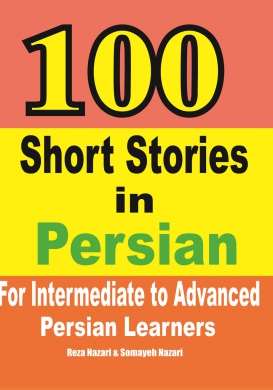
Saad Abad’s cultural and historical complex includes mansions and a palace that was built in Darband, in the northernmost and most pleasant climate of Tehran. This complex is located on a land area of three hundred hectares, of which more than one hundred and eighty hectares are natural forests, springs, aqueducts, orchards, greenhouses, and streets. Saad Abad palaces reach the beautiful and high mountains of Alborz from the north. Jafarabad river passes through the middle of the palace grounds.

Saad Abad complex was built during the Qajar period and about two hundred years ago and became the summer residence of kings. This complex includes more than eighteen palaces in different dimensions. The oldest palace in this complex is Kooshk Palace, which belonged to Ahmad Shah, the last king of the Qajar period. The newest palace in this complex is Leila Pahlavi Palace, which belonged to the youngest daughter of Mohammad Reza Pahlavi.
At present, all the palaces of Saad Abad have become museums.

Saad Abad Palace Complex is one of the three beautiful and historical palace complexes in the Shemiranat region of Tehran, where the last kings of Iran resided.
The area around Saad Abad Palace complex was covered with a garden in the past and there was a garden full of trees inside this complex. The Dedicated palace of Saad Abad complex is the main palace of this complex and Reza Khan has increased the number of palaces and buildings of Saad Abad complex over time. The palaces built in the Saad Abad complex belonged to members of Reza Shah Pahlavi’s family.
Today, the Saad Abad Palace complex is one of the most prominent places in Tehran and domestic and foreign tourists visit this beautiful complex with historical, cultural, and natural attractions during their trip to Tehran.

Other historical monuments of Iran:
History of Saad Abad Palace
Saad Abad Palace was built during the Qajar dynasty, and with the rise of the Pahlavi dynasty, the existing buildings in the Saad Abad complex were built and rebuilt by the order of Reza Khan. Parts of the Saad Abad complex were outside the complex during the reign of Reza Khan, which were purchased by Reza Shah and added to the Saad Abad complex.
The first buildings in the Saad Abad complex were located in an area of 8000 square meters and the palace of the Queen Mother was one of the first buildings available. Saad Abad complex is currently the largest historical complex left from the Pahlavi and Qajar periods in Tehran.

Architecture of Saad Abad Palace
Saad Abad historical complex is located on land with an area of nearly 300 hectares, of which about 110 hectares are mansions and palaces and about 180 hectares are gardens, aqueducts, and greenhouses of Saad Abad complex. In the construction of the mansions and palaces of the Saad Abad complex, a combination of European architecture and the original and traditional architecture of Iran can be seen, and the design of the palace buildings has been done by the most prominent domestic and foreign engineers.
At the entrance to the Sefid palace, there are four columns in the style of Roman architecture and the main facade is covered with marble.

Prominent Iranian artists and architects worked for nearly seven years to build the Sabz Palace, using the green stones of the Khamseh mine in Zanjan and the marble of Khorasan to create a beautiful view of the Green Palace. This palace is also known as the Marmar Palace.
The interior of the Sabz palace is full of delicate mirror work, tiling and plastering.
Another prominent architecture in the Saad Abad Palace complex is Shams Palace. The construction of Shams Palace in the northwest of Saad Abad complex lasted from 1314 to 1318. Shams Palace was built in an area of 2600 square meters and two floors with a basement. In the architecture of this palace, there are signs of European architectural style, especially German architecture and traditional Iranian architecture from the Sassanid era.
Ashraf Pahlavi Palace is located in an area of 1800 square meters east of Saad Abad Garden. In 1350, by the order of Ashraf Pahlavi, the exterior of this palace was covered with marble. Other buildings of the Saad Abad complex were built during the Qajar and Pahlavi eras and were rebuilt and restored during the second Pahlavi period. The works of Iranian artists can be seen in the corners of Saad Abad palaces.

Museums and palaces of Saad Abad complex
Shahvand Palace
Shahvand Palace, which is also known as the Sabz Palace due to its architecture, is located in the northwestern part of Saad Abad historical and cultural complex. Shahvand Palace or Sabz Palace was a semi-finished building with a private owner during Reza Khan’s Ministry of War and was located outside the royal palace. Then Reza Khan bought this half-finished building and built Shahvand Palace in its place. The construction of the Sabz Palace was completed when Reza Shah became a king.

Sefid Palace
The Sefid Palace (White Palace), as its name implies, has a white exterior. The Sefid Palace is the largest palace in the Saad Abad complex and was the residence of Mohammad Reza Shah Pahlavi and his wife Farah in the summer. The construction of the Sefid Palace began in 1310 by the order of Reza Shah and continued until five years later.
The office of Mohammad Reza Shah Pahlavi was located in the Sefid Palace, and the administrative and ceremonial affairs of the court were also performed in this palace.

Siaah Palace
The Siaah Palace (Black Palace) is located at the southern end of the Saad Abad historical complex. This building is one of the most beautiful palaces of the Saad Abad complex. During the years 1346 to 1357, the Siaah Palace was the residence of the court minister. The reason for naming this building as the Siaah Palace is the use of black marble stones in the appearance of this palace. The Siaah Palace was opened in 1982 as the Museum of Fine Arts.

Shams Palace
Shams Palace building is located on the northwest side of the Saad Abad complex. In this palace today there is a very complete museum of human evolution. Farah Diba’s royal costumes are also on display in a part of the palace called the Royal Costume Museum.

Ashraf Palace
Ashraf Pahlavi Palace in the east of Saad Abad historical and cultural complex has become a museum of royal dishes. The first museum of royal dishes was opened in 1372. At present, handicrafts and royal utensils related to the Pahlavi and Qajar periods, as well as utensils donated to Mohammad Reza Shah and Farah Pahlavi from all over the world, are on display in this museum.

Farah Pahlavi Palace
The building of this palace is located in the northernmost point of the Saad Abad complex with beautiful and unique architecture. During the years 1385 until now, various exhibitions of traditional clothes have been held in this building. Holding other art exhibitions, such as exhibitions of various paintings, has been one of the events of Farah Palace in recent years, and for this reason, this palace is now known as the Museum of Painting.

Shahram Palace
Shahram Palace has also been turned into a military museum today and is located in the center of the Saad Abad complex. The original building of this palace was built in 1314, by order of Reza Shah Pahlavi for his second wife, Taj al-Muluk. During 1351 and 1352, the building of this palace was completely renovated and given to Shahram, Ashraf Pahlavi’s son. In 1983, this palace was opened under the name of Military Museum.

Omidvar Brothers’ Museum
The current building of the Omidvar Brothers’ Museum in the northwest of the Saad Abad complex is a remnant of the Qajar period. In the past, part of the palace staff rested in this building and the court carriages were kept in this part. The Omidvar brothers were the first Iranian tourists to travel around the world in 1333. The valuable and historical achievements of the Omidvar Brothers are kept in this museum and visiting this collection is open to the public. The Omidvar Brothers Museum was opened in 2003, during Tourism Week.

Nature of Saad Abad Palace
Saad Abad Palace, along with its beautiful museums and magnificent palaces, also has beautiful nature. The whole area of Saad Abad garden is covered with tall and green plane trees. In addition to sycamore trees, there are various other species among the trees and plants of Saad Abad garden. If you are looking to enjoy the beautiful nature and walk among the trees, you can visit the Saad Abad Palace complex in autumn.
The variety of colors of the trees in Saad Abad Garden in autumn doubles the beauty of this garden.
The climate of the Shemiran region and Saad Abad historical and cultural complex is very pleasant in autumn and many tourists visit this complex this season.

Special Offers
by: Reza about (category: Blog)

















What people say about "Saad Abad complex"?
No one replied yet.